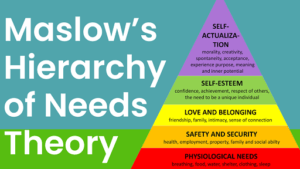When we think about our well-being and overall quality of life, it’s common to turn to Maslow’s Hierarchy of Needs for guidance. This psychological theory, proposed by Abraham Maslow in 1943, suggests that there is a hierarchy of human needs that must be satisfied in a specific order. As we move up the hierarchy, our needs become more complex and abstract. At the base are our physiological needs, such as food, water, and shelter, followed by safety, love and belonging, esteem, and, at the pinnacle, self-actualization.
In recent years, there has been growing concern about the impact of our environment on our health. Environmental health refers to the branch of public health that is concerned with how our surroundings can affect our well-being. Given the increased awareness of environmental issues and their impact on human life, it’s worth examining which of Maslow’s needs are related to our environmental health.
The Basics: Physiological Needs

1. Clean Air and Water:
- Ensuring access to clean air and water is fundamental to our physiological well-being.
- Pollution and contamination can have dire consequences on our health, potentially leading to respiratory problems, waterborne diseases, and other health issues.
- Clean air and water are essential for basic survival and are therefore strongly connected to our physiological needs.
2. Nutritious Food:
- Access to safe and nutritious food is another critical component of our physiological well-being.
- Environmental factors such as soil quality, climate, and pollution can impact food production and safety.
- A clean and sustainable environment is essential for ensuring a consistent food supply.
Safety Needs
3. Safe Communities:
- Safety needs encompass physical safety as well as economic and social safety.
- A clean and well-maintained environment plays a crucial role in creating safe communities.
- Reducing crime, natural disaster risk, and environmental hazards contribute to a sense of security.
4. Health Infrastructure:
- Access to healthcare and a well-functioning health infrastructure is vital for personal safety.
- Environmental pollutants and hazards can lead to a rise in health issues, necessitating a robust healthcare system.
Love and Belonging

5. Social Support:
- Building and maintaining social relationships are essential for fulfilling our need for love and belonging.
- Environmental issues can impact our ability to connect with others.
- Climate change and environmental disasters can displace communities, leading to a sense of isolation and loss of belonging.
Esteem Needs
6. Self-esteem and Environmental Consciousness:
- As we move up Maslow’s hierarchy, esteem needs become more psychological in nature.
- One aspect of self-esteem is feeling competent and capable in our environment.
- Promoting environmental consciousness and sustainable practices can boost our self-esteem, as we feel we are contributing positively to our surroundings.
Self-Actualization
7. Environmental Stewardship:
- Self-actualization represents the realization of our full potential.
- For some, this may involve becoming environmental stewards or advocates.
- Self-actualization can be linked to our ability to make a positive impact on the environment, ensuring a better world for future generations.
Maslow’s Hierarchy of Needs is closely intertwined with our environmental health. Our physiological needs, safety needs, and the broader aspects of love, belonging, esteem, and self-actualization are all influenced by the state of our environment. Recognizing these connections is vital as we strive to create a world where our environmental health supports the fulfillment of these fundamental human needs. Whether it’s clean air and water, safe communities, or the ability to contribute positively to the environment, there is a strong case for environmental conservation and sustainability in the context of Maslow’s hierarchy.


